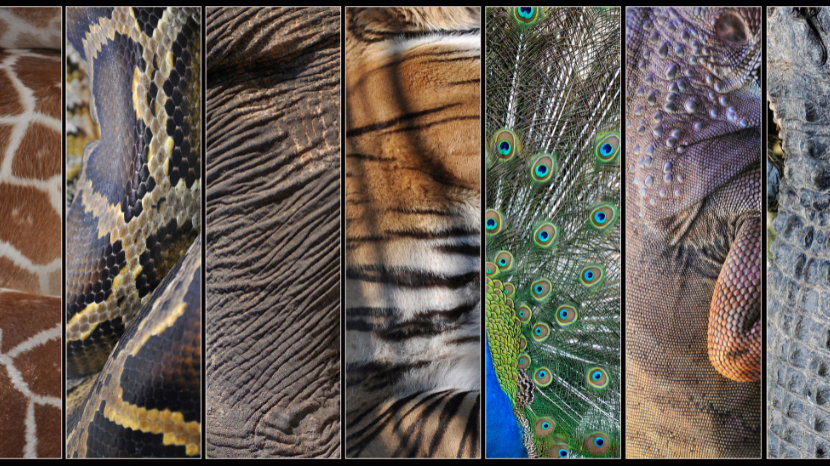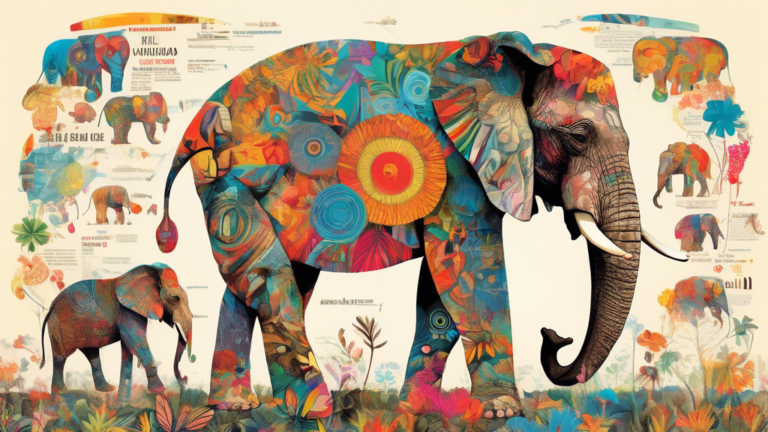100 Facts About Animals
100 Remarkable Animal Facts: Unveil the wonders of the animal kingdom in this captivating journey through nature’s most astonishing creatures. Dive in now to explore
Fact 1: The Immortal Jellyfish
The Turritopsis dohrnii, also known as the immortal jellyfish, has the ability to revert its cells back to their earliest stages, essentially allowing it to age backward and potentially live indefinitely.
Fact 2: Elephant Communication
Elephants communicate using low-frequency sounds, called infrasound, which can travel over long distances. This allows them to convey messages to each other even when they are miles apart.
Fact 3: The Fleeting Life of a Mayfly
Mayflies have one of the shortest lifespans of any animal. Their adult life lasts only for a few hours, during which they mate and then die.
Fact 4: The Echolocation Ability of Bats
Bats use echolocation to navigate and find food in the dark. They emit high-frequency sounds that bounce off objects, helping them to create a sonic map of their surroundings.
Fact 5: The Mimicry of the Lyrebird
The lyrebird can mimic natural and artificial sounds from its environment. It has been known to mimic chainsaws, camera shutters, and even human voices.
Fact 6: The Regenerative Powers of Axolotls
Axolotls have the remarkable ability to regenerate lost body parts, including limbs, spinal cord, heart, and other organs, making them a subject of extensive scientific research.
Fact 7: The Speed of a Cheetah
Cheetahs are the fastest land animals, capable of reaching speeds up to 60-70 miles per hour in short bursts covering distances up to 1,500 ft.
Fact 8: The Intelligence of Octopuses
Octopuses are highly intelligent creatures known for their problem-solving abilities. They have been observed using tools and exhibiting complex behaviors.
Fact 9: The Migration of Monarch Butterflies
Monarch butterflies undertake a remarkable migration journey, traveling thousands of miles from North America to their wintering grounds in Mexico.
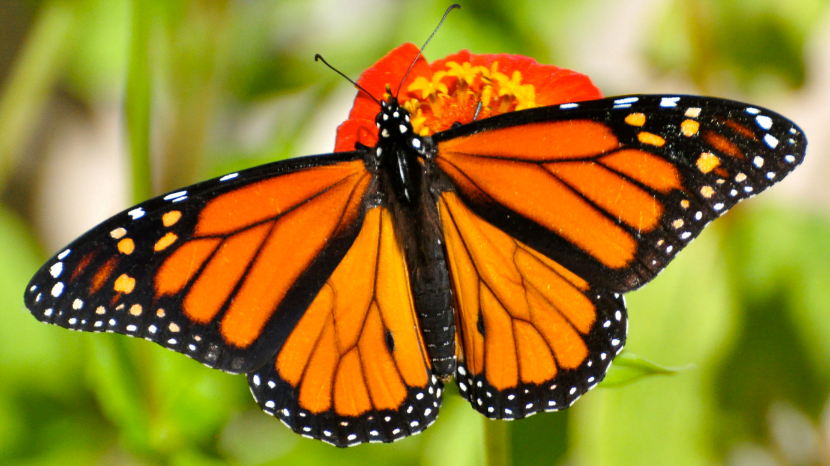
Fact 10: The Strength of a Leafcutter Ant
Leafcutter ants are known for their remarkable strength, capable of carrying objects many times their own body weight. They cultivate fungus gardens using the leaves they cut, which serves as their primary food source.
Fact 11: The Camouflage of Chameleons
Chameleons are famous for their ability to change color, which helps them communicate with each other and adapt to different environments for camouflage.
Fact 12: The Longevity of Greenland Sharks
Greenland sharks are among the longest-lived vertebrates on Earth, with some individuals estimated to be over 400 years old.
Fact 13: The Memory of Dolphins
Dolphins have excellent memory and can recognize themselves in mirrors, an indication of self-awareness, which is relatively rare in the animal kingdom.
Fact 14: The Complexity of Spider Webs
Spider webs are marvels of engineering. The silk produced by spiders is stronger than steel and tougher than Kevlar, the material used in bulletproof vests.
Fact 15: The Navigation Skills of Pigeons
Pigeons have remarkable navigation skills, allowing them to find their way home from hundreds of miles away, a trait that has been utilized for message delivery in the past.
Fact 16: The Social Structure of Honeybees
Honeybees live in complex social structures with clearly defined roles, including workers, drones, and a queen. They communicate using a series of dances to convey information about food sources.
Fact 17: The Bioluminescence of Fireflies
Fireflies produce light through a chemical reaction in their bodies, a phenomenon known as bioluminescence. They use this light to communicate and find mates.
Fact 18: The Flight of the Albatross
Albatrosses are known for their incredible flight abilities, capable of traveling thousands of miles without flapping their wings, using dynamic soaring techniques to conserve energy.
Fact 19: The Protective Nature of Elephants
Elephants are known for their strong familial bonds and protective nature. They mourn their dead and have been observed showing empathy towards other species.
Fact 20: The Playfulness of Otters
Otters are known for their playful behavior, often sliding down muddy or snowy hills, juggling rocks, and engaging in various playful activities, which also help them develop skills necessary for survival.
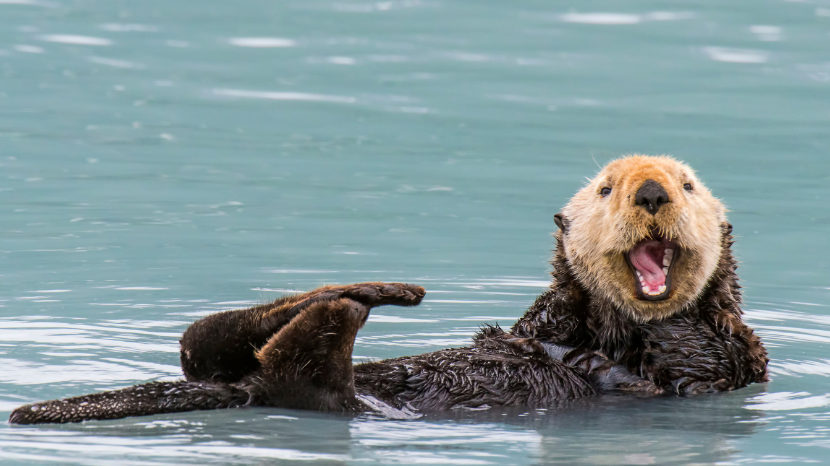
Fact 21: The Color Vision of Dogs
Dogs do not see the world in black and white, as commonly believed. They can actually perceive colors, but in a limited spectrum compared to humans, primarily seeing the world in shades of blue and yellow.
Fact 22: The Sleeping Habits of Giraffes
Giraffes have one of the shortest sleep requirements of any mammal, which is between 10 minutes and 2 hours in a 24 hour period, usually taking short naps that may last only a minute or two at a time.
Fact 23: The Unique Fingerprint of Koalas
Koalas have fingerprints that are remarkably similar to human fingerprints; even with an electron microscope, it can be quite challenging to distinguish between the two.
Fact 24: The Venomous Platypus
The platypus, one of the only mammals to lay eggs, also has a less known characteristic: the males have a venomous spur on their hind legs, capable of delivering a painful venom to predators or rivals.
Fact 25: The Incredible Jump of Fleas
Fleas are incredible jumpers, with the ability to jump distances 100 times their body length, which is equivalent to a human jumping over 600 feet.
Fact 26: The Migration of Arctic Terns
Arctic terns hold the record for the longest migratory journey of any bird species, traveling from their Arctic breeding grounds to the Antarctic and back again, a round trip of about 44,000 miles.
Fact 27: The Eusociality of Naked Mole Rats
Naked mole rats live in eusocial colonies, similar to bees and ants, with a single breeding queen and workers that take care of different tasks within the colony.
Fact 28: The Mimicry Skills of Cuttlefish
Cuttlefish are masters of mimicry, capable of changing their skin color and texture in an instant to blend in with their surroundings, a skill they use both for hunting and to avoid predators.
Fact 29: The Intelligence of Crows
Crows are incredibly intelligent birds, known to use tools and even understand basic physics. They have been observed using cars to crack open nuts and remembering human faces.
Fact 30: The Speed of Peregrine Falcons
Peregrine falcons are the fastest birds, and in fact, the fastest animals on the planet. When hunting, they can dive towards their prey at speeds of up to 240 miles per hour.
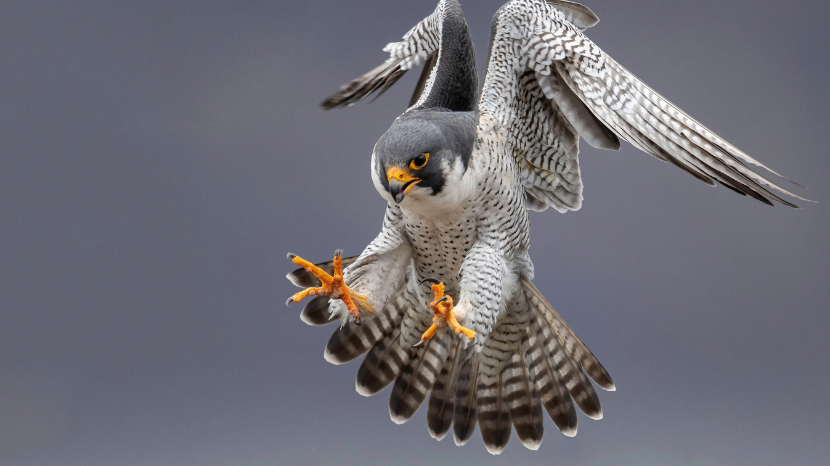
Fact 31: The Size of Blue Whales
Blue whales are the largest animals ever known to have lived on Earth, reaching lengths of up to 100 feet and weighing as much as 200 tons, their heart alone can weigh as much as a car.
Fact 32: The Echolocation of Dolphins
Dolphins use echolocation to find food and navigate through the water. They emit a series of clicks that bounce off objects and return to them, allowing them to create a sonic map of their surroundings.
Fact 33: The Lifespan of Ocean Quahogs
Ocean quahogs, a type of clam, can live for more than 500 years, making them one of the longest-lived creatures on Earth. Their age can be determined by counting the growth rings on their shells.
Fact 34: The Parenting Skills of Emperor Penguins
Emperor penguins are known for their dedicated parenting skills, with males incubating the eggs on their feet under a flap of skin to keep them warm in the harsh Antarctic winter, without eating for up to two months.
Fact 35: The Armor of Pangolins
Pangolins, also known as scaly anteaters, are covered in tough, overlapping scales, which act as armor to protect them from predators. They can roll into a ball when threatened, shielding their vulnerable underbelly.
Fact 36: The Communication of Prairie Dogs
Prairie dogs have a complex system of communication, with different sounds to signal different types of threats, and can even describe the color of clothes of humans approaching their colonies.
Fact 37: The Vision of Mantis Shrimp
Mantis shrimp have one of the most complex visual systems known in the animal kingdom, capable of seeing polarized light and detecting ten times more color than a human, including ultraviolet light.
Fact 38: The Metamorphosis of Axolotls
Axolotls are known to remain in their larval form throughout their life, a phenomenon known as neoteny. Unlike most amphibians, they do not undergo a complete metamorphosis and retain aquatic characteristics even as adults.
Fact 39: The Flight of Bar-Tailed Godwits
Bar-tailed godwits undertake one of the longest non-stop flights of any bird species during their migration, flying over 7,000 miles from Alaska to New Zealand without stopping.
Fact 40: The Symbiosis of Cleaner Fish
Cleaner fish, such as cleaner wrasses, have a symbiotic relationship with other fish species, feeding on parasites and dead skin, providing a cleaning service that is beneficial for both parties.
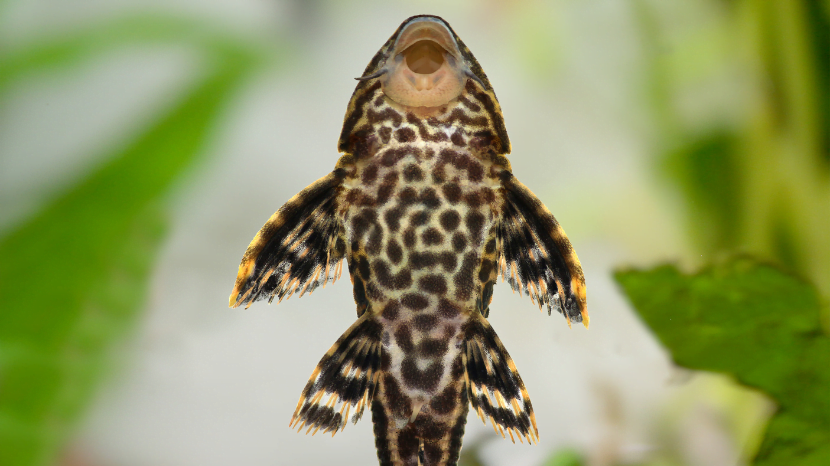
Fact 41: The Social Structure of Wolves
Wolves live in complex social structures called packs, which are led by an alpha pair. The pack works together in hunting and taking care of the young, showcasing remarkable teamwork and coordination.
Fact 42: The Tool Use of Capuchin Monkeys
Capuchin monkeys are known to use tools in their daily lives, utilizing rocks to crack open nuts and using sticks to extract insects from crevices, showcasing their problem-solving abilities.
Fact 43: The Vibrant Display of Peafowls
Peafowls, particularly males, are known for their vibrant and elaborate tail feathers, which they display in a fan-like formation during courtship rituals to attract a mate.
Fact 44: The Aerodynamics of Flying Fish
Flying fish have adapted to glide over the water’s surface for considerable distances, using their wing-like fins to escape predators in the water, showcasing a remarkable blend of aerodynamics and evolution.
Fact 45: The Navigation Skills of Salmon
Salmon have remarkable navigation skills, returning to the exact spot where they were born to spawn, often traveling thousands of miles and using the Earth’s magnetic field and their sense of smell to navigate.
Fact 46: The Flocking Behavior of Starlings
Starlings are known for their coordinated flocking behavior called murmurations, where thousands of birds fly together in fluid, mesmerizing formations, creating a spectacular aerial display.
Fact 47: The Venom of Cone Snails
Cone snails, found in warm and tropical seas, use a venomous harpoon-like tooth to catch prey. Their venom contains a complex mixture of toxins, some of which are being researched for potential medical applications.
Fact 48: The Intelligence of African Grey Parrots
African grey parrots are known for their remarkable intelligence and ability to mimic human speech. They have been observed demonstrating understanding of concepts like shape, color, and numbers.
Fact 49: The Bioluminescence of Glow-Worms
Glow-worms, which are not worms but beetles, use bioluminescence to attract mates. The females emit a greenish light to signal their availability to males flying overhead.
Fact 50: The Cooperation of Ant Colonies
Ant colonies showcase remarkable cooperation and division of labor, with different types of ants performing specific roles, including foraging, defense, and taking care of the young, working together to support the colony.
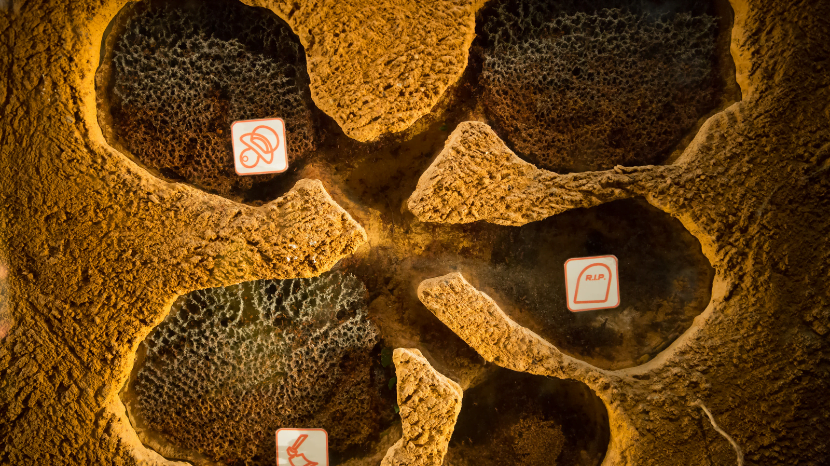
Fact 51: The Speed of Sailfish
Sailfish are considered the fastest fish in the ocean, capable of swimming at a speed of up to 36 miles per hour, using their bill-like snouts to slash at schools of fish, making them easier to catch.
Fact 52: The Migration of Wildebeest
Wildebeest undertake one of the most spectacular migrations in the animal kingdom, with over a million individuals traveling in a circular route through the Serengeti and Masai Mara ecosystems in search of fresh grazing lands.
Fact 53: The Strength of Gorillas
Gorillas are incredibly strong, with the ability to lift up to 10 times their body weight. Despite their strength, they are generally gentle and shy creatures.
Fact 54: The Camouflage of Leaf-Tailed Geckos
Leaf-tailed geckos are masters of camouflage, with bodies that resemble leaves, allowing them to blend seamlessly into their forest habitats, making them nearly invisible to predators.
Fact 55: The Complexity of Elephant Societies
Elephant societies are matriarchal, led by the oldest and often largest female. These matriarchs have a wealth of knowledge and experience, guiding their families to water and food sources.
Fact 56: The Agility of Ibexes
Ibexes are known for their remarkable agility in steep and rugged terrains, using their specially adapted hooves that provide grip and balance, allowing them to scale nearly vertical cliffs.
Fact 57: The Communication of Orcas
Orcas, or killer whales, have complex communication systems, with different pods having unique dialects, which include a series of clicks, whistles, and pulsed calls, used for communication and echolocation.
Fact 58: The Parental Care of Emperor Penguins
Emperor penguins showcase remarkable parental care, with both parents taking turns to incubate the egg and forage for food, braving the harsh Antarctic conditions to raise their young.
Fact 59: The Symbiotic Relationship of Clownfish and Sea Anemones
Clownfish and sea anemones have a mutualistic relationship, where the clownfish gains protection from predators by living among the anemone’s stinging tentacles, and in return, provides the anemone with food.
Fact 60: The Eusociality of Naked Mole Rats
Naked mole rats live in eusocial colonies, similar to bees and ants, with a single breeding queen and workers that take care of different tasks within the colony.
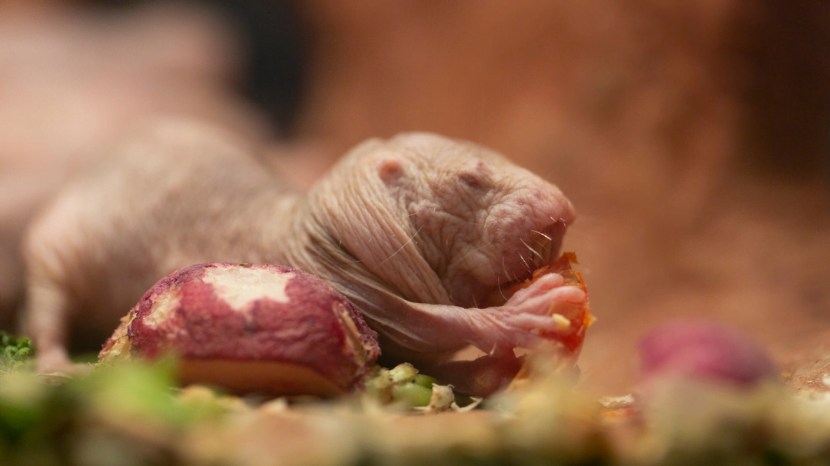
Fact 61: The Fertility Dance of Albatrosses
Albatrosses engage in intricate courtship dances that involve synchronized movements and vocalizations. These dances help strengthen the bond between mates, who often form long-lasting partnerships.
Fact 62: The Nest Building Skills of Bowerbirds
Bowerbirds are known for their remarkable nest-building skills. Males construct elaborate structures called bowers, decorated with brightly colored objects to attract females.
Fact 63: The Protective Shell of Turtles
Turtles have a bony or cartilaginous shell that acts as a shield, protecting them from predators. This shell is an extension of their ribcage and spine, and they cannot crawl out of it, contrary to popular belief.
Fact 64: The Echolocation of Microbats
Microbats, also known as echolocating bats, use echolocation to navigate and hunt in the dark. They emit high-frequency sounds that bounce off objects, helping them to create a sonic map of their surroundings.
Fact 65: The Migration of Christmas Island Red Crabs
Every year, millions of Christmas Island red crabs migrate in a synchronized mass movement to the sea to spawn, creating a spectacular sea of red that covers the ground.
Fact 66: The Monogamy of Swans
Swans are known for their monogamous mating habits, forming long-lasting bonds with their partners. They are often seen swimming and resting with their necks entwined, a symbol of affection and unity.
Fact 67: The Speed of Black Marlin
Black marlins are one of the fastest fish in the ocean, capable of swimming at speeds up to 82 miles per hour. They are highly prized by sport fishermen for their speed and agility.
Fact 68: The Intelligence of Pigs
Pigs are highly intelligent animals, capable of learning complex tasks, recognizing themselves in mirrors, and even playing video games, showcasing their problem-solving abilities and cognitive skills.
Fact 69: The Social Structure of Meerkats
Meerkats live in complex social groups called clans, led by a dominant female. They work together in raising young, foraging for food, and keeping a lookout for predators, showcasing remarkable teamwork and cooperation.
Fact 70: The Bioluminescence of Deep-Sea Creatures
Many deep-sea creatures, like the anglerfish and dragonfish, use bioluminescence to lure prey in the dark depths of the ocean, where light from the surface does not reach.

Fact 71: The Venomous Bite of Solenodons
Solenodons are one of the few mammals with a venomous bite. They have specialized lower incisors connected to venom glands, which they use to deliver venom to their prey.
Fact 72: The Vibrant Colors of Mandarinfish
Mandarinfish are known for their vibrant and intricate color patterns, which serve as a form of camouflage, helping them blend into the colorful coral reefs where they reside.
Fact 73: The Jumping Ability of Fleas
Fleas are capable of jumping distances up to 100 times their body length, thanks to their specialized hind legs, which act like springs, propelling them into the air with remarkable force.
Fact 74: The Migration of Bar-Headed Geese
Bar-headed geese are known for their incredible migratory journeys, flying over the Himalayas at altitudes up to 29,000 feet, where oxygen levels are extremely low.
Fact 75: The Regenerative Abilities of Sea Stars
Sea stars, also known as starfish, have remarkable regenerative abilities, capable of regrowing lost arms and even regenerating a new body from a single arm, given that part of the central disc remains.
Fact 76: The Camouflage of Leaf Insects
Leaf insects are masters of camouflage, with bodies that resemble leaves, allowing them to blend seamlessly into their environment, making them nearly invisible to predators.
Fact 77: The Communication of Elephants
Elephants communicate using a complex system of vocalizations, body language, and even seismic signals, which are low-frequency sounds that can travel through the ground, allowing them to communicate over long distances.
Fact 78: The Parental Care of Cichlids
Cichlids, a family of fish, are known for their remarkable parental care, with many species carrying their young in their mouths to protect them from predators.
Fact 79: The Speed of Pronghorns
Pronghorns, native to North America, are the second-fastest land animals, capable of reaching speeds up to 55 miles per hour, and can maintain high speeds for longer distances than cheetahs.

Fact 80: The Symbiotic Relationship of Cleaner Shrimp and Fish
Cleaner shrimp have a symbiotic relationship with fish, where they set up cleaning stations and remove parasites and dead skin from fish, providing a cleaning service that benefits both parties.
Fact 81: The Aerial Acrobatics of Flying Squirrels
Flying squirrels don’t actually fly, but glide through the air with the help of a special membrane called the patagium, which stretches from their wrists to their ankles, allowing them to cover distances of over 150 feet in a single glide.
Fact 82: The Complex Societies of Termites
Termites live in complex societies with a division of labor among different castes, including workers, soldiers, and reproductive individuals. Their mounds are architectural marvels, with intricate tunnel systems and ventilation shafts.
Fact 83: The Eusociality of Naked Mole Rats
Naked mole rats live in eusocial colonies, similar to bees and ants, with a single breeding queen and workers that take care of different tasks within the colony, showcasing a remarkable level of cooperation and organization.
Fact 84: The Navigation Skills of Homing Pigeons
Homing pigeons have an extraordinary ability to find their way home over long distances, a skill that has been utilized for thousands of years for message delivery, thanks to their innate homing ability and excellent memory.
Fact 85: The Mimicry of Mockingbirds
Mockingbirds have the ability to mimic the songs of other bird species, and even mechanical noises, with remarkable accuracy. They have a diverse repertoire, which they use to establish territory and attract mates.
Fact 86: The Intelligence of Raccoons
Raccoons are highly intelligent creatures, known for their problem-solving abilities. They have been observed opening complex locks and can remember the solutions to tasks for up to three years.
Fact 87: The Migration of Leatherback Sea Turtles
Leatherback sea turtles undertake remarkable migratory journeys, traveling thousands of miles between their feeding and nesting grounds. They are known to cross entire oceans during their migrations.
Fact 88: The Speed of Brazilian Free-Tailed Bats
Brazilian free-tailed bats are among the fastest flying birds, capable of reaching speeds up to 99 miles per hour, thanks to their long and narrow wings, which allow for fast and agile flight.
Fact 89: The Social Behavior of Dolphins
Dolphins are known for their complex social behaviors, living in groups called pods, where they engage in cooperative hunting, play, and even have been observed helping injured or ill members.
Fact 90: The Camouflage of Cuttlefish
Cuttlefish are masters of camouflage, capable of changing their skin color and texture in an instant to blend in with their surroundings, a skill they use both for hunting and to avoid predators.
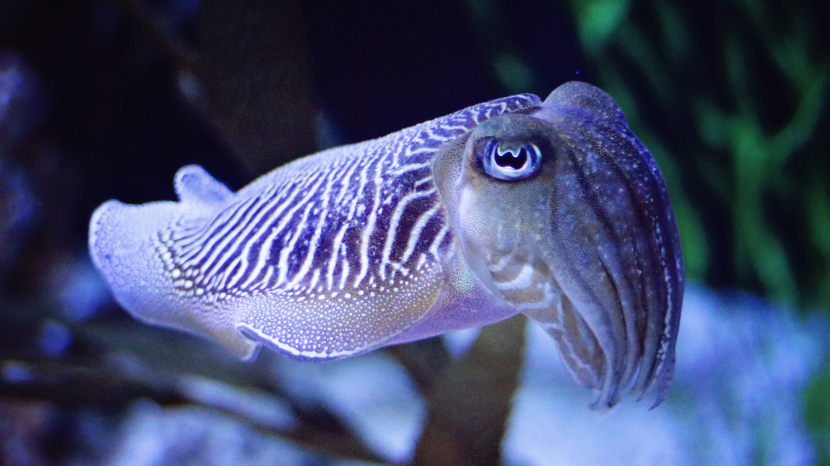
Fact 91: The Longevity of Bowhead Whales
Bowhead whales are among the longest-lived mammals, with some individuals estimated to be over 200 years old. They are known for their massive baleen plates, which they use to filter feed on tiny plankton.
Fact 92: The Parental Care of Harpy Eagles
Harpy eagles are known for their dedicated parental care, with both parents taking turns to incubate the eggs and feed the young, often caring for their offspring for up to two years.
Fact 93: The Venomous Spines of Stonefish
Stonefish are one of the most venomous fish in the world, with sharp spines that can deliver a potent venom, causing extreme pain and even death in humans if not treated promptly.
Fact 94: The Flocking Behavior of Flamingos
Flamingos are known for their synchronized flocking behavior, where large groups engage in coordinated movements, creating a mesmerizing and graceful display, which helps in fostering social bonds within the group.
Fact 95: The Strength of Dung Beetles
Dung beetles are incredibly strong, capable of rolling balls of dung up to 50 times their own body weight. They play a vital role in ecosystems by recycling nutrients and aiding in decomposition.
Fact 96: The Echolocation of Beluga Whales
Beluga whales use echolocation to navigate and find food in the murky waters of the Arctic. They emit a series of clicks that bounce off objects, helping them to create a sonic map of their surroundings.
Fact 97: The Regenerative Abilities of Planarians
Planarians, a type of flatworm, have remarkable regenerative abilities, capable of regrowing entire bodies from a single piece of tissue, thanks to a high concentration of stem cells.
Fact 98: The Courtship Display of Peacock Spiders
Peacock spiders are known for their vibrant colors and elaborate courtship displays, where males perform intricate dances to attract females, showcasing a remarkable level of complexity and beauty in their behaviors.
Fact 99: The Migration of Dragonflies
Some species of dragonflies undertake long migratory journeys, traveling thousands of miles across continents. They are known for their agile flight and ability to hover, fly backward, and change direction rapidly.
Fact 100: The Symbiotic Relationship of Clownfish and Sea Anemones
Clownfish and sea anemones have a mutualistic relationship, where the clownfish gains protection from predators by living among the anemone’s stinging tentacles, and in return, provides the anemone with food and protection from predators.
Conclusion
Our journey through the animal kingdom brings us face-to-face with the remarkable diversity and complexity that exists in the world around us. From the intricate dances of peacock spiders to the awe-inspiring migrations of dragonflies, each fact unveils a story of adaptation, survival, and the sheer wonder of nature. As we stand at the threshold of discovery, let us continue to explore and appreciate the myriad of life forms that share our planet, each holding a secret, a lesson, and a spectacle of nature’s grandeur. Let’s foster a spirit of curiosity and conservation, ensuring that the generations to come can also marvel at the wonders of the animal kingdom.

